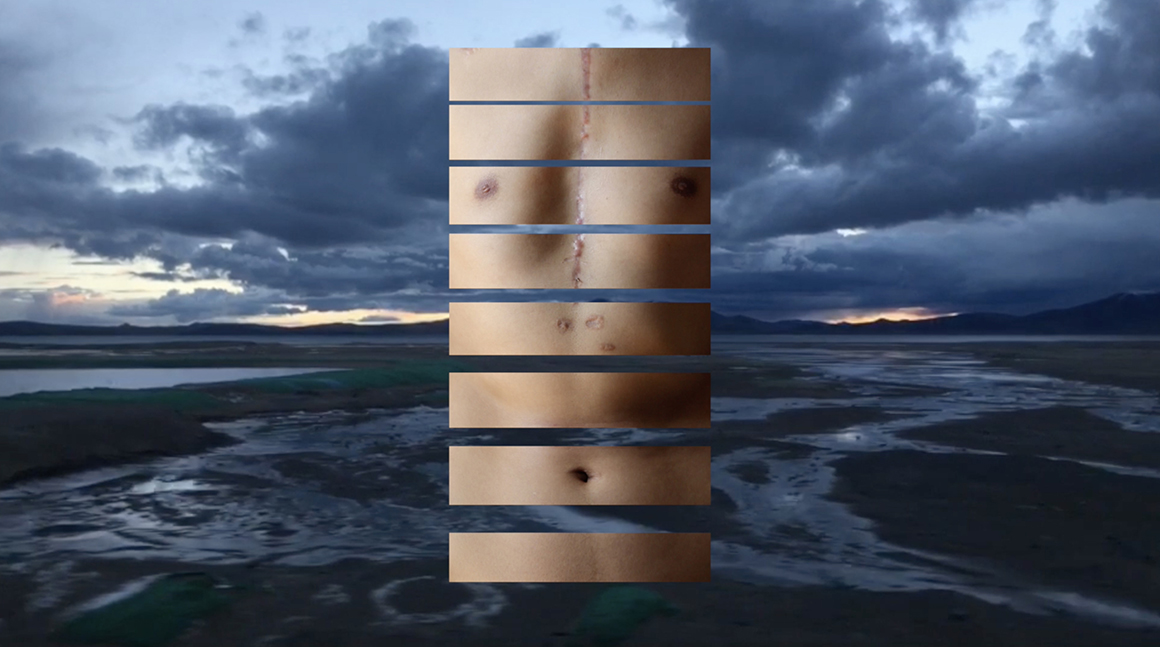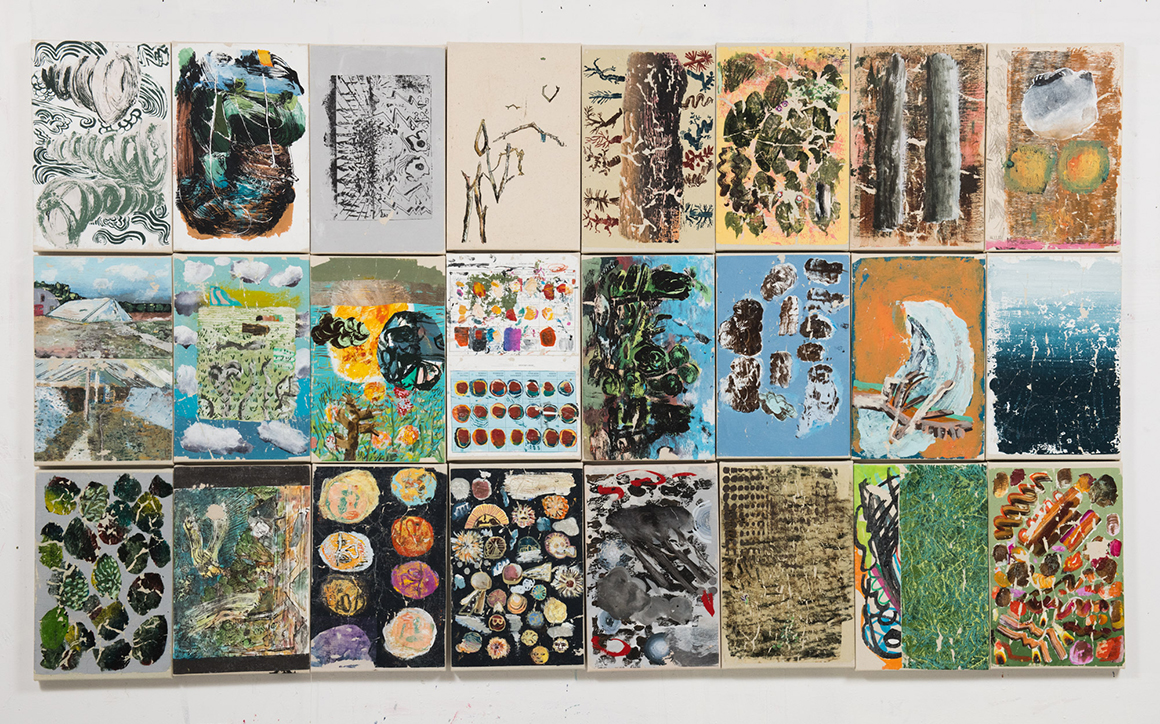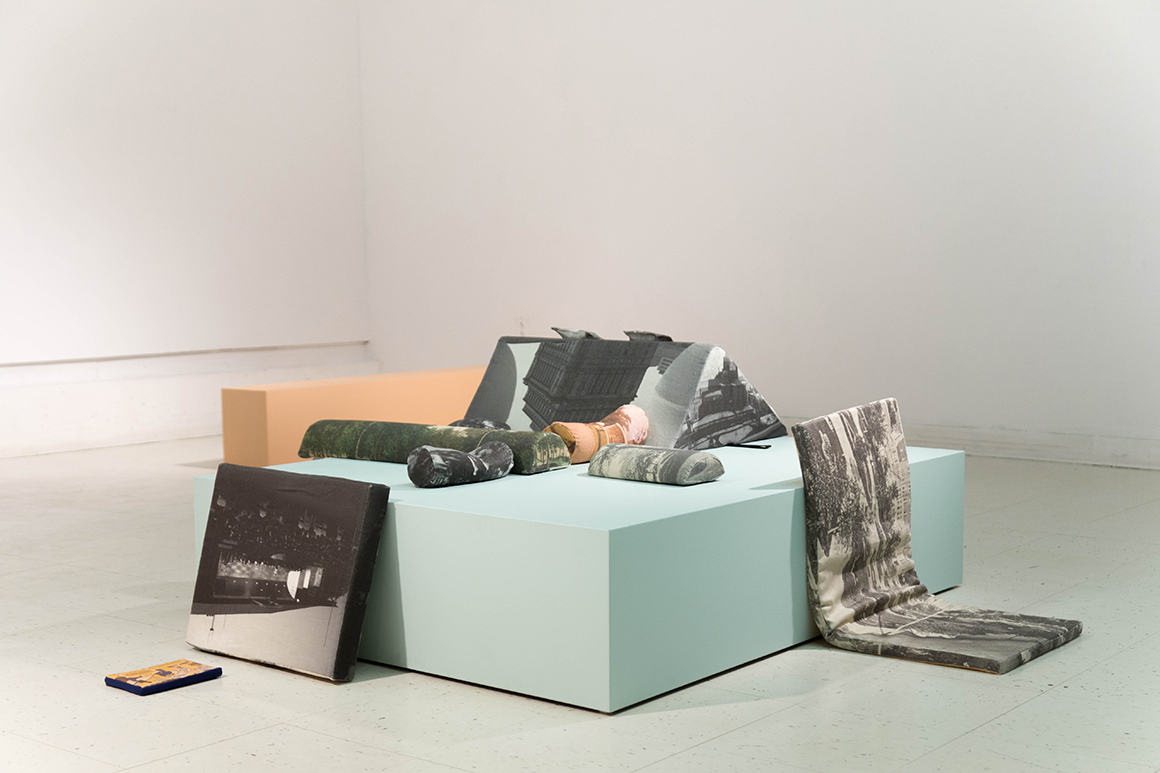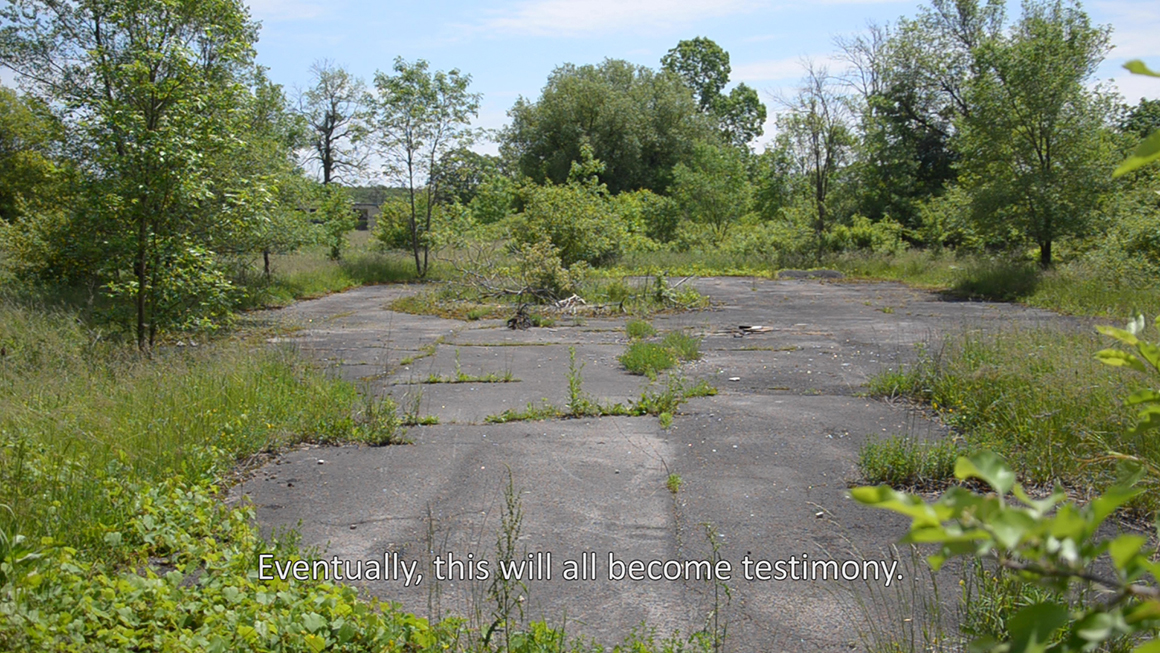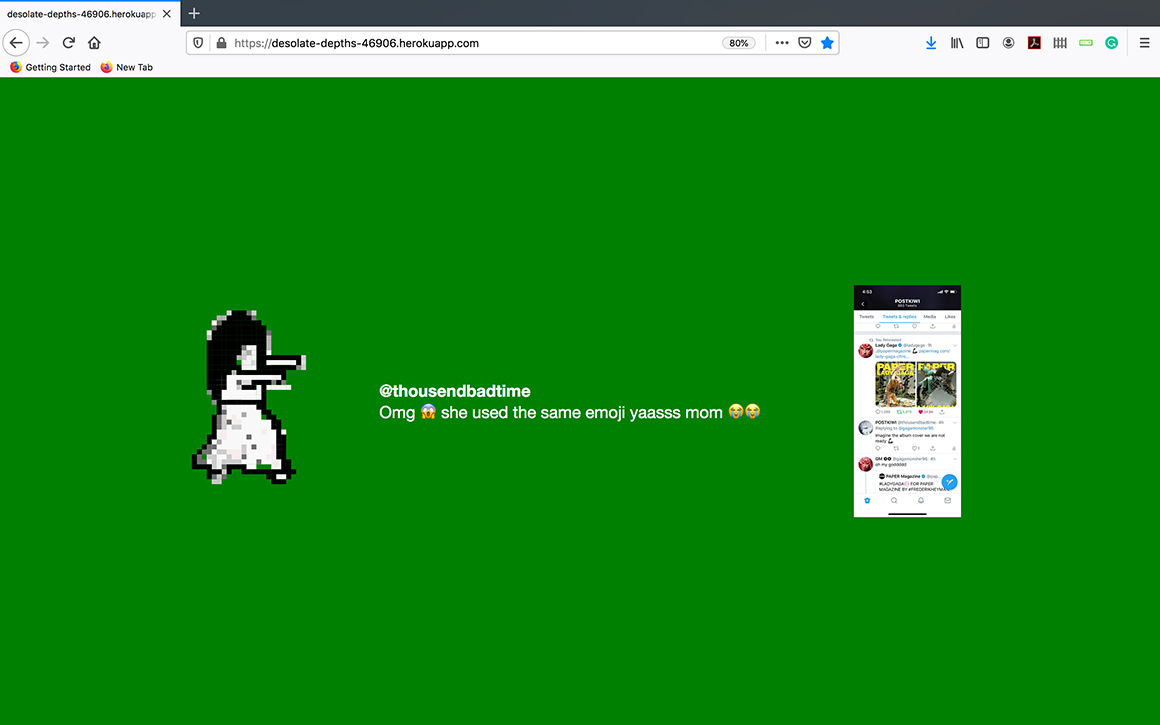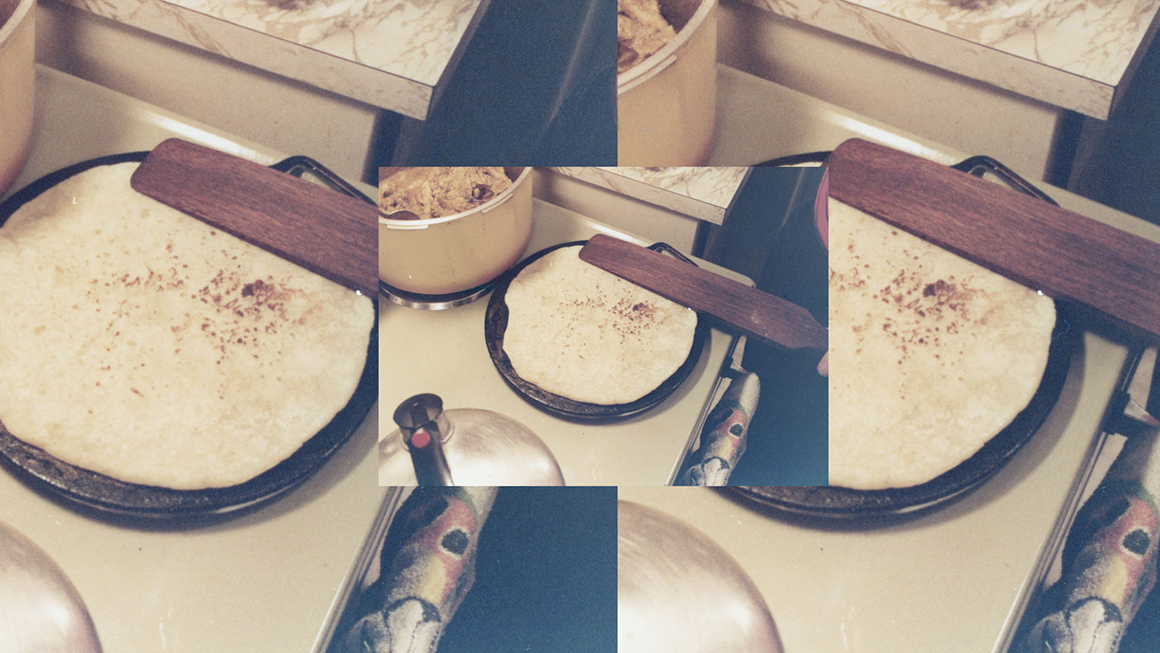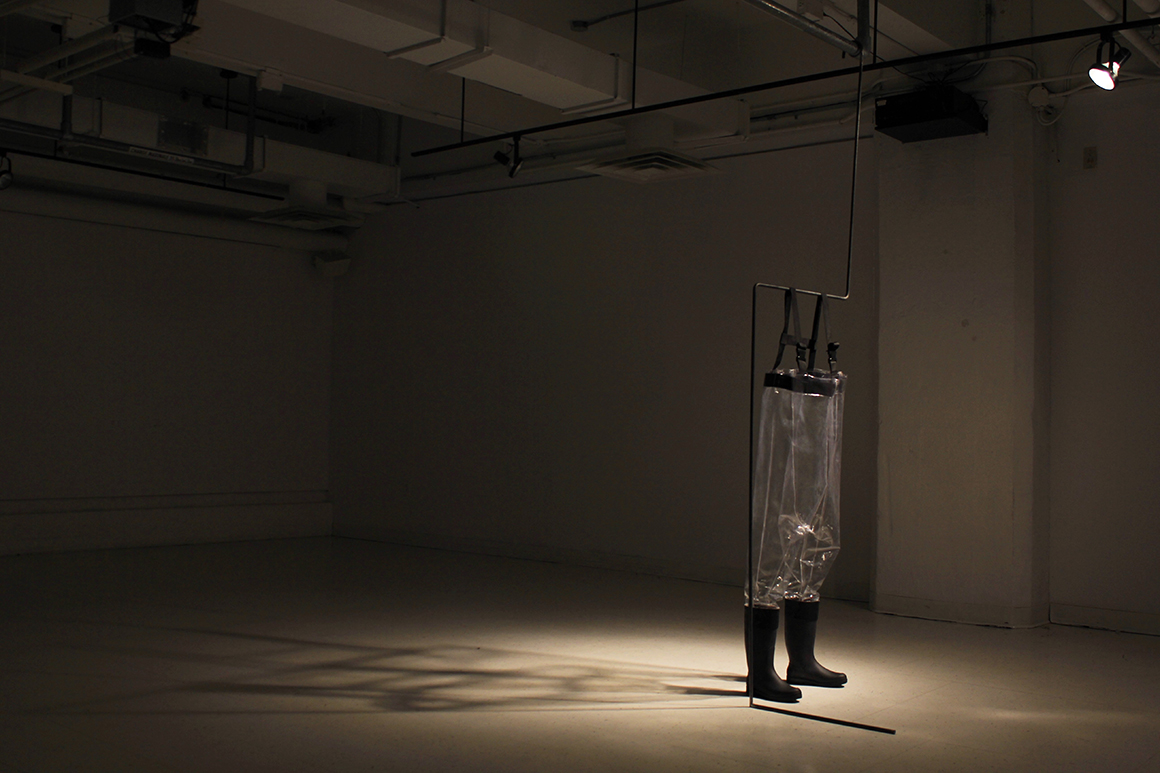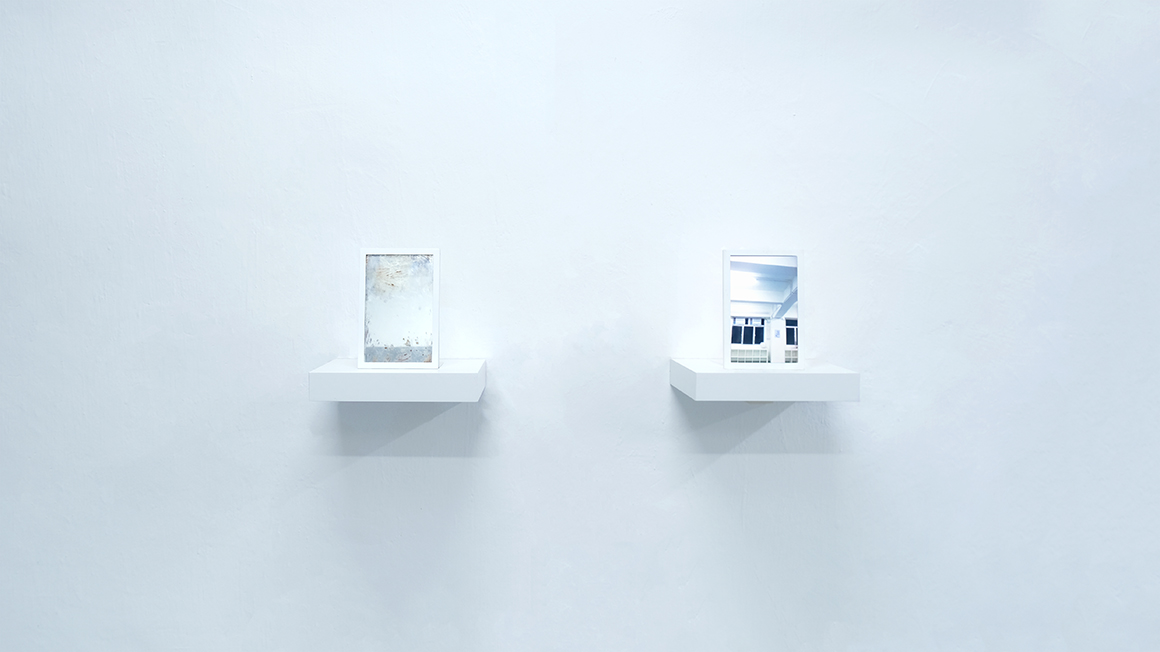Every week, a new theme will be explored within this space.
Week April 27th: Surroundings
This week we turn our focus to Iso E. Setel’s, David Lafrance’s and Mariane Stratis’ practices.
A camera surveying the edges of a contaminated site, the landscape genre under the threat of climate crisis, a counter-archive of the spaces of death arranged as a site of rest.
What strategies are there for mapping our surroundings? What angles can be adopted so to traverse not only physical space but its surrounding conditions and histories, natural and artificial influences, and future ground-swells, be they environmental or political?
During this final week of IGNITION, watch Love Canal, July 12th, 2019, Iso E. Setel’s study of community, toxic waste and corporate accountability, view documentation of David Lafrance’s Les matériaux du paysage, a landscape painting system built of fragments of plants, minerals, and textures, and consider processes of embodied research in Mariane Stratis’s Les cimetières aussi peuvent mourir.
Week April 20th: Traces
This week we turn our focus to Elliott Elliott’s, Christopher Johnstone’s, and Jiyang Zhang’s practices.
Rewriting to trace the effects of mark-making, the migrant experience as the condition for historical research, and finding a path through and by way of ambivalence.
What is the act of tracing? To go over things again, to produce a double, to pursue and arrive at the source? How do you account for, pay witness to or testify to being traced, to being marked and leaving marks?
This week, learn about Elliott Elliott’s studies in retracing their thoughts, watch Christopher Johnstone’s Five Acres a portrait of migration and indentureship in Trinidad by way of his great-grandfather’s life, and view three short videos from Jiyang Zhang’s series six pieces in album Stargazer, each a track built from fragments of memories, emotion, and reverie.
Week April 13th: Feedback
This week we turn our focus to Janice Ka-Wa Cheung’s, Ahreum Lee’s, and Diyar Mayil’s practices.
A missive from daughter to mother sent to an inactive account, data’s cool logic compared to the body’s excess, and a selfie that doesn’t augment your image but lets it slip away.
Feedback operates through inputs and returns, evaluation and adjustment, cycles and control. What experiences and responses arise when feedback falls silent, tightens its constraint, or contradicts the output we’re accustom to?
As Ignition 16 continues online, you’re invited this week to watch Ahreum Lee’s account of the mediated family in her video and live website Memory Palace, consider the regimentation of bodies through Diyar Mayil’s sculpture series (dis)bodied, and view video documentation of Janice Ka-Wa Cheung’s YOU ≠ I an interactive installation presenting the viewer with two forms of reflection.
IGNITION is an annual exhibition that features new work by students currently enrolled in the Studio Arts or Humanities graduate programs at Concordia University. It provides an up and coming generation of artists with a unique opportunity to present ambitious, interdisciplinary works in the professional context of a gallery with a national and international profile. This year, due to exceptional circumstances, graduate students worked directly with Gallery staff to produce an on-line presentation. It places an emphasis on critical, innovative, and experimental work, engaging in the exploration and consideration of diverse media and practices. IGNITION is of interest to all students and faculty, the art community, and the general public.
Projects selected by Eunice Bélidor and Michèle Thériault
Produced with the support of the Frederick and Mary Kay Lowy Art Education Fund
Artists and works

YOU ≠ I, 2019. Installation. 35 x 110 cm. Courtesy of the artist
PRACTICE
I work with erasure, making invisible through proximity. My aim is to examine narcissism in the digital era and how art practices facilitate the questioning and exploration of one’s self. I urge viewers to rethink the desire to see a perfect self-image, to contemplate the prevalence of and behaviour around selfies, these “perfect” images that we retouch, edit, and shuffle on social media platforms.
WORKS
YOU ≠ I, 2019
Installation, 100 x 26 x 30 cm
Courtesy of the artist
YOU ≠ I aims to shake our daily activities, providing an uncanny experience that forces the viewer to consciously question their behavior when seeing their reflection in a mirror and through today’s digital technologies.
I intend to create an interactive experience that questions our visual perceptions and reminds viewers that we can never see our own face without mediation. The closer a viewer comes to this “mirror,” the more transparent the reflection becomes.
EXPLORE
Proximity. Consider how the work both reflects and retreats from the viewer’s image. How do you understand withdrawal in relation to digital technology?
Control. What happens a sense of selfhood or individuality when the viewer’s body becomes an instrument for interactivity?
FOR MORE INFORMATION
Close
Elliott Elliott, Notes, 2020. Drawing with free-hand machine embroidery on fabric. 3D modeling by Ryan Clayton. Courtesy of the artist
PRACTICE
Speech traces bodies from the moment of birth—It’s a boy!—with social markers and norms falling into place after it. How information is codified and circulated tells us how to know and speak, but also how to be. In my work, I seek forms that allow me to encounter knowledge as elastic and forgiving, that are able to accommodate differing material realities so to imagine what knowledge is, what it does, and what can be done with it.
WORKS
Notes, 2020
Drawing with free-hand machine embroidery on fabric
3D modelling by Ryan Clayton
Courtesy of the artist
My primary practice is installation and performance art with a heavy textual component. Notes, a series underway since 2012, runs parallel to this as annotations of my thinking and research. While this research is often compiled and bundled into other forms such as essays and performances the notes-as-drawings perform a different task by offering up the context of the page and presenting a visual record of thinking-through-mark-making.
EXPLORE
Rewriting. Consider the act of presenting notes again. Is retracing a form of writing? How do you retrace a thought?
Reversals. The artist plans to embroider their notes, leaving both sides of the fabric visible. Think about the underside of text. What ways of reading and looking do you use when text is reversed? How do you follow a pencil’s or pen’s line compared to a line of thread?
FOR MORE INFORMATION
Close
Five Acres, 2020. HD video, colour, sound. 6 min. 10 sec. Video still. Courtesy of the artist
PRACTICE
I am interested in the movement and behaviour of people. My aim is to contribute to conversations within my community and offer an opinion with nuance in a world seemingly polarized by extremes. As a quiet child, I observed; as a silly child, I reinterpreted. The resulting work is a playful manipulation of the images based on what I have come to know.
WORK
Five Acres, 2020
HD video, colour, sound: 6 min. 10 sec.
Courtesy of the artist
Focusing on my great grandfather’s journey as an indentured labourer, I am interested in using this time period as a vehicle to examine my ancestral fracture from land. How does this figure within the ever-shifting Canadian identity? How can I contribute to ideas around the migrant image, iterations of labour and brownness? How can the cinematic form as a contemporary visual language humanize our ancestors’ experiences?
EXPLORE
Polyvocality. Listen for multiple narratives and histories. Can you identify their sources? From what standpoints do they speak from?
Migrant image. Can one single image represent migrancy or need it be seen through multiple, interconnected and overlapping frames?
FOR MORE INFORMATION
Close
PRACTICE
My work explores themes from our contact with nature and the environment under the influence of the tension between the real and the virtual. These two poles—one tangible, the other potential—reveal the ambivalence in maintaining a clear position on a subject in mutation. Through a new approach at a material level I manufacture landscapes from accumulated fragments, using chance as a means to provoke the apparition of new compositions.
WORKS
Les matériaux du paysage, 2018–2020
Acrylic on canvas, 29.94 cm x 43.18 cm each
Courtesy of the artist
Les matériaux du paysage is an ongoing series of paintings underway for the past year. The format of each work is 17 x 11 inches and directly reflects the paper size. On these standard sheets, I accumulate fragments to be later transferred on to larger paintings. In some way, the series is an interruption of the creative processes, the aim to keep intact the documents inspiring the construction of landscape paintings amid ecological catastrophes.
EXPLORE
Inventory. What natural elements, forms, and textures do you identify in these works? How do you understand nature and the environment when it is divided up in this way?
Reproduction. When composing larger landscape works Lafrance uses a collage technique and draws material from this inventory. With this added step in mind, reflect on natural processes and artificial interventions at play in the environments around us.
FOR MORE INFORMATION
Close
Memory Palace, 2019-2020. From the series My Mother is Data. 2-channel video/web installation. 17 min. 30 sec. Video still and website (Live streaming). Courtesy of the artist
PRACTICE
Through a variety of media, I am interested in examining the feedback loop between the individual and society as it manifests through the power dynamics embedded in technology. Since coming to Canada, my work has taken several different directions based on a combination, or sometimes a clash, of experience and interests. The intersection of my interest in hidden political messages embedded in technology and the immigrant experience coalesce in recent works Memory Palace.
WORKS
Memory Palace, 2019–2020
From the series My Mother is Data
2-channel video/web installation: 17 min. 30 sec.
Courtesy of the artist
Memory Palace is a two-channel video installation. One shows an autobiographical screencast video centered on my relationship with my estranged mother, who I have only communicated with electronically since the age of ten, while the other displays a website that mines in real-time Twitter posts that include the words mom, mother, mum, or mommy. The work examines the connecting/disconnecting effects of technology-mediated familial relationships and the real emotions created in virtual spaces.
EXPLORE
Support systems. Consider the contents of the windows on the desktop. In what ways do they contain, carry or point to emotion, location, and history?
Data analysis. How would you categorize the different references and relationships to mothers and motherhood as read in the tweets?
FOR MORE INFORMATION
Close
Diyar Mayil, Femmestatistics, 2019. From the series (dis)bodied. Aluminum, hair. 190.5 x 7.62 x 152.4 cm. Detail. Courtesy of the artist. Photo: Rixt De Boer
PRACTICE
I am an interdisciplinary artist working in sculpture, installation and performance. My work explores the public life of marginalized bodies. Comfort, discomfort, adaptation, and the acceptance of different bodies in both public and private contexts are recurring subjects in my work. These bodily gestures and subjects are filtered through the different materials used in my practice. Originally from Istanbul, I now live and work in Montreal.
WORKS
Femmestatistics, 2019
Aluminum, hair
190.5 x 7.62 x 152.4 cm
Leaky Pants, 2018
PVC, rubber, steel
152.4 x 60.96 cm
From the series (dis)bodied
Courtesy of the artist
In recent years, and especially at this crucial moment, witnessing people preserver under violent suppression reminds me of how we have become experts at biting our lips, keeping our identity dormant until we find the means to wake it up. My sculptural series (dis)bodied speaks to the ways this and other forms of disenfranchisement are incorporated into our bodies.
EXPLORE
Presence. Femmestatistics is structured like an abacus. Compare the hard angles and scale of its metal frame to the delicate biological material it contains.
Incorporation. In what ways are bodies and behaviours monitored and measured? What devices are used? What standards or schools of thought are employed?
FOR MORE INFORMATION
Close
Love Canal, July 12th, 2019, 2020. Video, 8 min. 30 sec. Video still. Courtesy of the artist
PRACTICE
Concerned with the politics of visuality, I am a filmmaker and artist who uses moving images to address questions of materiality, ethics, and memory. I hold a particular interest in the construction of landscape qua monument and address the natural as a site of architectural intervention with the aim of unearthing histories of expropriation. My work explores documentary forms, treating images as topographical surfaces along whose fault lines the production of documentary value might be traced.
WORKS
Love Canal, July 12th, 2019, 2020
Video, colour, sound: 8 min. 30 sec.
Courtesy of the artist
In 1920, Hooker Chemical Company bought the Love Canal site in Niagara Falls, New York, and for the next thirty years filled it with toxic materials. In this film, I return to the site, largely marked by absences, to make visible the sensory traces left by the chemical burden of waste. In doing so I work to disturb the very ground under which some of the country’s most toxic substances and volatile histories are submerged.
EXPLORE
Mapping. Observe how the footprint of the site is traced by the camera. How is the frame determined by the elements of a seemingly empty landscape?
Invisibility. How is image and text combined to make sensible contamination, sickness and disinformation?
FOR MORE INFORMATION
Close
PRACTICE
Oscillating between fiction and reality, my practice explores the cultural experience surrounding death, resulting in installation-based work integrating sculpture, photography, and performance. Playful and poetic, the space opened by these installations becomes a performative pretext to generate incongruent situations with the aim of activating the spectator’s physical presence. I hope to raise questions of the body’s future and its fragility, of how societies manage, treat and adapt to the loss of human lives
WORKS
Les cimetières aussi peuvent mourir, 2019 –
Inkjet print on linen, buckwheat hulls, foam, thread, wood
Variables dimensions
Courtesy of the artist and Bibliothèque et Archives nationales du Québec
Les cimetières aussi peuvent mourir is an imagined conversation between what is no longer visible and what once was, on the subject of the Faubourg Saint-Antoine cemetery (1799–1854) better known as Dorchester Square and Place du Canada. These counter-archives revisit changes in status and layout, considering the different sources of power tied to the site’s history. Waiting for encounters with bodies, the soft orthopedic cushions ask to be manipulated, moved, piled up or crushed.
EXPLORE
Rest. What is the act of resting? The cushions have held resting bodies, rest against each other, and carry history once left to rest. How can rest inform different approaches to research?
Recovery. The title of the work proposes that sites, concepts, and practices too can die. What techniques for reading the archive are presented to recover overlooked histories and make visible processes of erasure?
FOR MORE INFORMATION
Close
Chinglish, 2020. From the series six pieces in album Stargazer. Video, colour, sound, 35 sec. Video still. Courtesy of the artist
PRACTICE
My artistic practice focuses on emotion, language, dislocation, and exploring ways of building empathy. As a visual artist with a journalism background, my image-based works also examine humanity and anxieties amid current social-political phenomenon and problems.
WORKS
Stretch, 2020
Video, colour, sound: 2 min. 47 sec.
Chinglish, 2020
Video, colour, sound: 35 sec.
Loading, 2020
Video, colour, sound: 3 min. 45 sec.
From the series six Pieces in Album Stargazer
Courtesy of the artist
This project is organized in the manner of an album. This album consists of six short films, each of them extending in different directions and visual ways. It starts with the perspective of a train passing through a city at night, wobbly, hypnotically, slowly, and rapidly. Each part of the album represents a segment of memory interlaced with reality and illusion. All of these eventually converge into a floating, swinging consciousness that seems to be nonexistent.
EXPLORE
Ambivalence. In what ways are contradictory or entangled feelings, questions, and statements presented? How is this communicated through language? How is this represented through images?
Rhythm. Like pop songs each video is three minutes or under. How does this format combined with music contain and relay problems and questions? What do find repeating and carrying over to the next video?
FOR MORE INFORMATION
Close





